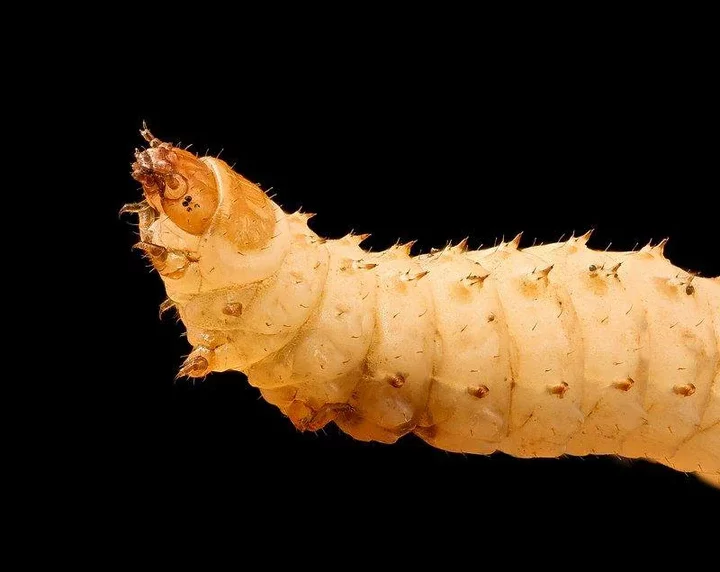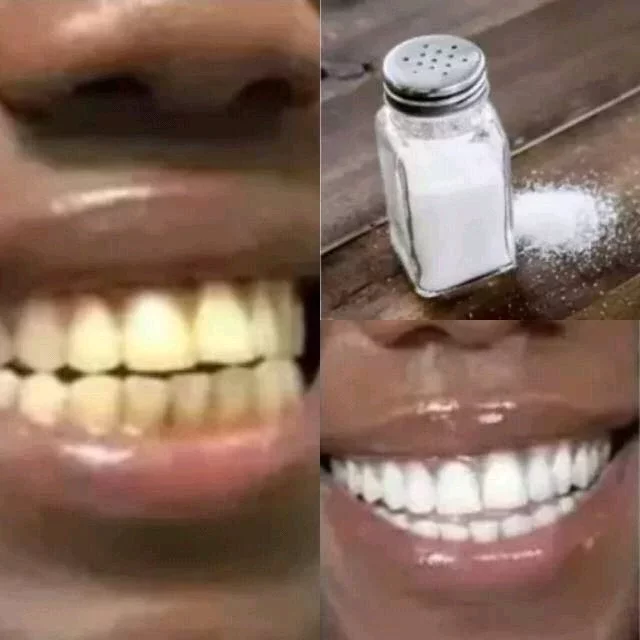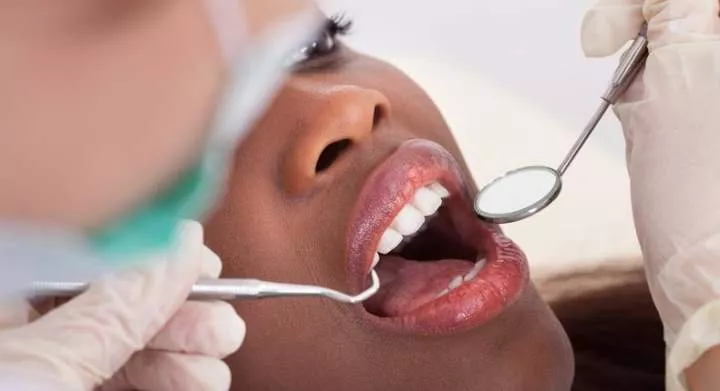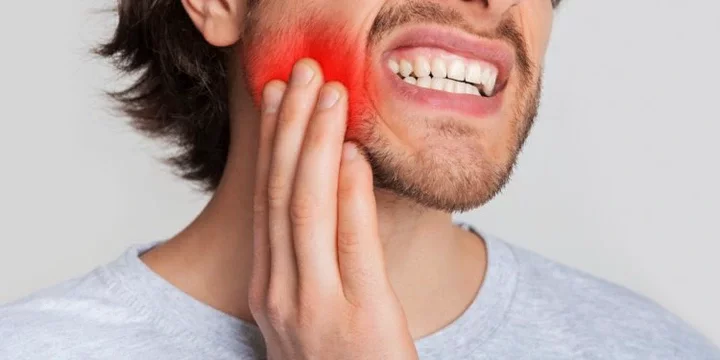Have you ever experienced an unsettling sensation in your mouth, as if something were crawling beneath your gums? You may be dealing with a rare but alarming condition known as oral myiasis or mouth larva. This parasitic infestation occurs when fly larvae take up residence in the oral cavity, causing discomfort and potential health complications. In this article, you'll discover the causes of mouth larva, learn to recognize its telltale symptoms, and explore the most effective treatment options available. By understanding mouth larvae, you'll be better equipped to protect yourself and seek prompt medical attention if necessary.
What Is Mouth Larva?

Mouth larva, also known as oral myiasis, is a rare and disturbing condition where fly larvae infest the oral cavity. This occurs when flies lay their eggs in or around your mouth, typically while you're sleeping. The eggs then hatch into maggots, which feed on the soft tissues inside your mouth. You may experience symptoms such as a crawling sensation, bad breath, or visible movement in your oral tissues. This condition is more common in tropical regions and often affects individuals with poor oral hygiene, open-mouth sleeping habits, or certain medical conditions that impair their ability to maintain oral cleanliness.
What Do Mouth Larvae Look Like?
Mouth larvae, also known as oral myiasis, appear as small, white or cream-coloured worm-like creatures in the oral cavity. These parasitic organisms typically measure 1-2 mm in length and have a segmented body structure. You may observe them moving or wriggling within the affected areas of your mouth, such as the gums, palate, or tongue. The larvae often cluster together, creating a visible mass that can be alarming to witness. In some cases, you might notice tiny dark spots on their bodies, which are respiratory spiracles. As they mature, the larvae can grow larger and become more noticeable, potentially causing discomfort or pain in the affected area.
Where Do Mouth Larvae Live?
Mouth larvae, also known as oral myiasis, primarily inhabit the oral cavity and surrounding tissues. You may find these parasitic organisms in various areas of your mouth, including:
Oral Tissues
Larvae can burrow into your gums, palate, and lips. They often prefer moist, warm environments within the oral cavity.
Dental Structures
In severe cases, you might discover larvae infesting tooth sockets or areas around dental implants.
Surrounding Areas
The infestation can extend beyond the mouth, affecting your nasal passages, sinuses, or even the skin around your lips and cheeks.
Understanding these habitats is crucial for early detection and effective treatment of oral myiasis.
What Do Mouth Larvae Eat?
Mouth larvae, also known as maggots in oral myiasis cases, primarily feed on the living or necrotic tissue within the oral cavity. These parasitic organisms consume soft tissues, including gums, tongue, and palate. In severe cases, they may even penetrate deeper, affecting the underlying bone structure.
The larvae's diet also includes oral fluids, such as saliva and blood, which provide essential nutrients for their growth and development. As they feed, these organisms secrete enzymes that break down the surrounding tissue, facilitating easier consumption and potentially exacerbating the infection.
What is the Life Cycle of Mouth Larvae?
The life cycle of mouth larvae, also known as oral myiasis, involves several distinct stages. It begins when an adult fly deposits its eggs in or around the mouth of a human host. Within 24 hours, these eggs hatch into first-stage larvae. As you may experience, these larvae burrow into the oral tissues, feeding on surrounding flesh and secretions. Over the next 5-7 days, the larvae molt twice, growing larger with each stage. Finally, the mature larvae exit the host's mouth to pupate in the soil. After about a week, adult flies emerge, ready to continue the cycle. Understanding this process is crucial for prevention and early intervention.
Types of Mouth Larvae
These are some common types of mouth larvae:
Human botfly (Dermatobia hominis)
Human botfly larvae can infest the oral cavity, causing significant discomfort. These parasites typically enter through skin lesions but may migrate to the mouth. Once there, they feed on surrounding tissues, leading to inflammation and potential infection.
Flesh fly (Sarcophagidae)
Flesh fly larvae, or maggots, can occasionally inhabit the mouth, particularly in cases of poor oral hygiene or underlying health conditions. These larvae thrive on decaying organic matter and can cause tissue damage and secondary infections if left untreated.
Screwworm fly (Cochliomyia hominivorax)
Screwworm fly larvae are particularly aggressive, feeding on living tissue. In rare cases, they can infest the mouth, causing severe pain and rapid tissue destruction. Prompt medical intervention is crucial to prevent serious complications and ensure complete removal of these dangerous parasites.
How Do You Get Mouth Larva?
You can get mouth larvae through several means, but these are the common ones:
Contaminated Food and Water
You can contract mouth larvae by consuming contaminated food or water. This often occurs in areas with poor sanitation or when consuming raw or undercooked fish or meat.
Poor Oral Hygiene
Neglecting oral hygiene can create an environment conducive to larval growth. Regular brushing and flossing are essential preventative measures.
Direct Contact
Direct contact with infected individuals or contaminated surfaces can lead to transmission. Avoid sharing personal items like toothbrushes or utensils.
Environmental Exposure
Exposure to environments where the larvae thrive, such as stagnant water or unsanitary conditions, increases your risk of infection.
Autoinfection
In some cases, you may reinfect yourself if proper hygiene isn't maintained during and after treatment.
Vector-borne Transmission
Certain insects can act as vectors, transmitting larvae through bites or contact with infected saliva.
Compromised Immune System
A weakened immune system can make you more susceptible to mouth larva infections, emphasizing the importance of overall health maintenance.
What Causes Mouth Larva?
Mouth larva, scientifically known as oral myiasis, is primarily caused by the infestation of fly larvae in your oral cavity. You may become susceptible to this condition due to poor oral hygiene, open-mouth sleeping, or existing oral wounds. Certain fly species, particularly those from the Calliphoridae and Sarcophagidae families, are attracted to decaying organic matter and may lay eggs in your mouth. These eggs then hatch into larvae, which feed on your oral tissues. Factors such as alcoholism, senility, or mental disabilities can increase your risk, as they may impair your ability to maintain proper oral care or prevent fly access to your mouth.
Recognizing the Symptoms of Mouth Larva
You may experience the following symptoms if you have a mouth larva:
Unexplained oral discomfort: You might feel a persistent, uncomfortable sensation in your mouth.
Visible movement: You may notice small, worm-like creatures moving on your tongue or gums.
Swelling: Your gums or other areas of your mouth might become swollen.
Bleeding: You may experience unexplained bleeding from your gums or other oral tissues.
Bad breath: Persistent halitosis can be a sign of mouth larva infestation.
Difficulty swallowing: You might find it challenging to swallow normally.
Increased salivation: You may produce more saliva than usual.
Itching sensation: You might feel an itchy or crawling sensation in your mouth.
Nausea: You may feel queasy or experience vomiting.
Fatigue: Unexplained tiredness could indicate a parasitic infection.
Weight loss: Unintentional weight loss may occur due to nutrient theft by larvae.
Allergic reactions: You might develop hives, itching, or difficulty breathing.
If you experience these symptoms, consult a healthcare professional immediately for proper diagnosis and treatment.
Health Risks of Mouth Larvae
Mouth larvae pose several serious health risks that you should be aware of:
Tissue Damage
Larvae can cause significant damage to your oral tissues, potentially leading to infections and ulcerations.
Bacterial Infections
The presence of larvae may introduce harmful bacteria, increasing your risk of secondary infections.
Nutritional Deficiencies
Larvae feeding on oral tissues can interfere with your ability to eat, potentially resulting in malnutrition.
Respiratory Issues
There's a risk of larvae migrating to your respiratory tract, causing breathing difficulties or lung infections.
Psychological Distress
The knowledge of having larvae in your mouth can cause severe anxiety and emotional distress.
Systemic Complications
In rare cases, larvae may enter your bloodstream, leading to potentially life-threatening systemic infections.
Effective Treatments for Mouth Larva
These are some effective treatments for mouth larvae:
Oral Ivermectin
You may be prescribed oral ivermectin, an antiparasitic medication. This treatment effectively targets the larvae, eliminating the infestation.
Topical Benzyl Benzoate
Your doctor might recommend applying benzyl benzoate directly to the affected areas. This topical solution helps kill the larvae and reduce symptoms.
Antibiotics
In cases of secondary bacterial infections, you may need antibiotics to combat additional complications and promote healing.
Surgical Removal
For severe cases, your healthcare provider may suggest surgical intervention to physically remove visible larvae from your oral cavity.
Saltwater Rinses
You can use warm salt water rinses to help soothe irritation and potentially dislodge some larvae, complementing other treatments.
Neem Oil Application
Applying neem oil, known for its antiparasitic properties, may help manage the infestation and alleviate discomfort.
Dietary Modifications
Your doctor might advise dietary changes to create an unfavorable environment for larvae, potentially including increased garlic and probiotics consumption.
How to Get Rid of Mouth Larvae
Seek medical attention: Consult a healthcare professional immediately for proper diagnosis and treatment.
Oral irrigation: Rinse your mouth thoroughly with warm salt water to dislodge larvae.
Antiparasitic medication: Take prescribed drugs to eliminate the parasites systemically.
Manual removal: Allow a medical professional to carefully extract visible larvae.
Maintain oral hygiene: Brush and floss regularly to prevent re-infestation.
Avoid contaminated food: Ensure all food and water are from safe sources.
Boost your immune system: Consume a balanced diet and consider supplements to enhance resistance.
Follow-up care: Attend all scheduled appointments to monitor recovery and prevent recurrence.
Frequently Asked Questions
These are some frequently asked questions and answers about mouth larvae.
What are mouth larvae?
Mouth larvae, also known as oral myiasis, are fly maggots that infest the oral cavity. These parasites can develop when flies lay eggs in or around the mouth, typically in individuals with poor oral hygiene or open wounds.
How can I prevent mouth larvae?
Prevention involves maintaining good oral hygiene, promptly treating oral injuries, and avoiding sleeping outdoors in fly-infested areas. Regular dental check-ups and proper nutrition also play crucial roles in reducing the risk of oral myiasis.
What are the treatment options?
Treatment typically includes manual removal of larvae, antibiotics to prevent secondary infections, and thorough cleaning of the affected area. In severe cases, surgical intervention may be necessary to address tissue damage and ensure complete eradication of the infestation.
How long does treatment take?
Treatment duration varies depending on the severity of the infestation. Typically, oral medications are prescribed for 1-3 days. However, complete elimination of symptoms may take up to two weeks. Follow your healthcare provider's instructions carefully for the best results.
Are mouth larvae contagious?
Mouth larvae are not directly contagious from person to person. However, the parasites causing the condition can spread through contaminated food, water, or surfaces. Maintain good hygiene practices to minimize the risk of transmission within households or communities.
Conclusion
In conclusion, mouth larvae infestations, while rare, can be a distressing and potentially dangerous condition if left untreated. By understanding the causes, recognizing the symptoms, and seeking prompt medical attention, you can effectively manage and overcome this parasitic infection. Remember to practice good oral hygiene, avoid consuming raw or undercooked meat, and be cautious when traveling to areas where the condition is more prevalent. If you suspect you may have mouth larva, do not hesitate to consult a healthcare professional. With proper diagnosis and treatment, you can successfully eliminate the parasites and prevent future occurrences, ensuring your oral health and overall well-being remain intact.
















Comments